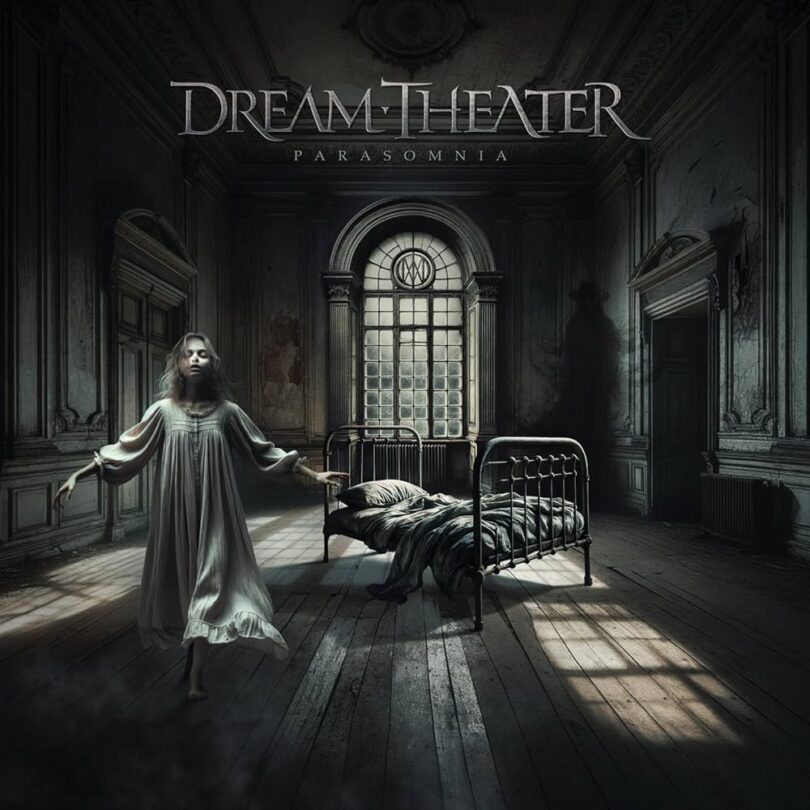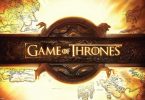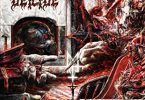[ENG] “Parasomnia” is Dream Theater’s sixteenth studio album and marks the return of drummer/songwriter Mike Portnoy, whose last appearance on a band project dates back to 2009, with the release of “Black Clouds & Silver Linings“.
For those who may not know, Portnoy is the mastermind behind progressive metal masterpieces of the ’90s, primarily “Images and Words” and “Metropolis Pt. 2: Scenes from a Memory“. Seeing his signature on a new DT album is one of the most exciting things a fan of the band, or simply a progressive metal enthusiast, could hope for.
Sealing this reunion, the 40th-anniversary tour that kicked off last October brought the most iconic progressive metal band back on stage with its most famous lineup.
“Parasomnia“ is not a true concept album, but rather a thematic record centered around sleep and its related disorders, such as paralysis, sleepwalking, and nightmares. The band’s intention to draw from their most celebrated past works, particularly “Metropolis Pt. 2“, and to continue the artistic journey abruptly interrupted with Portnoy is evident right from the instrumental intro In the Arms of Morpheus. This piece can be considered a darker version of “Overture 1928“. The listener is gently guided into the world of dreams, only to be thrown into a vortex of unease, vividly portrayed by Petrucci through a series of unsettling guitar passages, just before leading into a beautiful solo that serves as a bridge to the next track.
“Night Terror“ is the album’s first single and perfectly represents the “new old” path that DT has taken. Mike’s distinctive drumming, filled with instantly recognizable tones and signature polyrhythms, defines a dark, tempo-shifting track with a melodic chorus and an overall eerie feel that fits well with the nightmare theme.
“A Broken Man“ deals with insomnia. A long guitar-and-drum intro sets the stage for an extensive yet somewhat lackluster composition. The melodies, often reminiscent of the band’s previous works, fail to leave a lasting impression, except for Petrucci’s bluesy solo, which elevates the piece and saves it from fading into anonymity.
“Dead Asleep“ tells the story of a man who, in the throes of a sleepwalking episode, kills his lover. Here, the torment caused by sleep disorders intensifies and is conveyed through relentless guitar rhythms, direct riffs, and an overall obsessive atmosphere, further enhanced by Jordan Rudess’ keyboard work.
“Midnight Messiah“ breaks the album’s dark and heavy flow. This track incorporates thrash metal influences, direct and fast-paced, fitting well with LaBrie’s vocals. While not the strongest track on the album, it serves its purpose effectively without standing out too much.
Similarly, the instrumental “Are We Dreaming?” acts as a bridge, a brief organ interlude with whispered vocals, intimate and evocative. It serves as the perfect introduction to the album’s most beautiful and inspired track: “Bend the Clock“.
This ballad is a masterpiece, fully embracing the band’s best traditions. Acoustic guitars over a soft piano background, gentle drumming, and Myung’s bass create a melancholic and emotional piece. Even LaBrie delivers a strong vocal performance, weaving emotional melodies that tell the story of a man desperately wishing he could turn back time to avoid a life of sleepless torment.
The album’s finale is entrusted to the lengthy and, at times, solemn “The Shadow Man Incident“, closing “Parasomnia” with its over 19-minute duration. This track encapsulates everything DT has poured into this album, providing a faithful snapshot of the band today.
A delicate music box chime introduces a doom-oriented guitar riff, accompanied by the unmistakable Portnoy. Signature DT riffs and melodic breaks precede a soft-sung verse. Then, fast guitars, aggressive vocals, keyboard-driven melodies, and Petrucci churning out riff after riff.
A long instrumental digression, highlighted by an outstanding piano solo from Rudess, risks dragging the track down, but its grand, melodic, and epic finale solidifies a composition that is both dark and majestic.
The protagonist is now awake, finally freed from the shadowy figure seen on the album cover. But is he really? Different interpretations are possible, leaving each listener to find their own meaning.
Dream Theater proves that even after 40 years, their compositional spark remains largely intact. In fact, the return of the phenomenal Mike Portnoy has injected fresh energy, restoring the drive that had been missing in recent years. Additionally, the individual performances remain top-tier, despite Myung’s relatively understated presence and the inevitable vocal aging of James LaBrie, who wisely avoids pushing his voice to its limits as he has in the past.
DT delivers an excellent album, once again confirming why they remain one of the most important metal bands in history.

[ITA] “Parasomnia” è il sedicesimo album in studio dei Dream Theater e segna il ritorno del batterista/songwriter Mike Portnoy, la cui ultima apparizione in un lavoro della band risale al lontano 2009, anno di uscita di “Black Clouds & Silver Linings“.
Portnoy, per chi non lo sapesse, è l’autore di capolavori del progressive metal degli anni ‘90, “Images and Words“ e “Metropolis Pt. 2: Scenes from a Memory“ in primis. Ritrovare la sua firma su un nuovo lavoro dei DT è quanto di più eccitante un fan della band o più semplicemente un amante del genere possa desiderare.
A suggello di questa nuova unione, il tour del 40° anniversario partito lo scorso ottobre ha riportato sui palchi il gruppo più iconico del progressive metal con la formazione più famosa.
“Parasomnia” non è un vero e proprio concept album, bensì un disco tematico che parla del sonno e dei suoi disturbi correlati, come la paralisi, il sonnambulismo e gli incubi stessi. L’intento della band di attingere dai lavori passati più blasonati, e in particolar modo da “Metropolis Pt. 2”, e proseguire il percorso artistico bruscamente interrotto assieme a Portnoy, è palesato dalla intro stumentale “In the Arms of Morpheus”, che può essere considerata una versione più cupa di “Overture 1928”. L’ascoltare viene accompagnato dolcemente nel mondo dei sogni, per poi essere scaraventato in un vortice di disagio, ben descritto da Petrucci in una serie di passaggi di chitarra “disturbanti”, poco prima di addentrarsi in un delizioso assolo che funge da ponte per la successiva traccia.
“Night Terror” è il primo singolo dell’album e rappresenta bene il nuovo (vecchio) corso intrapreso dai DT. Il distintivo drumming di Mike, fatto di colpi dal sound riconoscibilissimo e dai caratteristici controtempi, definisce un brano dalle tinte oscure e cambi di tempo molteplici, con un ritornello melodico e un senso di creepy generale che si sposa bene con la dimensione dell’incubo.
“A Broken Man” è un brano che parla dell’insonnia. Il lungo intro di chitarra e batteria anticipa una composizione prolissa e un poco scialba. Le melodie, che richiamano sempre qualcosa di già sentito da parte della band, non lasciano però il segno, ad eccezione del solo blueseggiante inserito da Petrucci, che riesce a nobilitare il pezzo e a non recluderlo nell’oblio dell’anonimato.
“Dead Asleep” narra la storia di un uomo che, in preda ad un episodio di sonnambulismo, uccide la propria donna. Qui il tormento causato dai disturbi del sonno si acuisce e viene descritto da un ritmo martellante di chitarra che si dipana attraverso riff diretti, immersi in un’ atmosfera generale ossessiva creata anche dal lavoro alle tastiere di Jordan Rudess.
“Midnight Messiah” spezza il ritmo con lo scenario tetro proposto dal disco sinora. Si tratta di una canzone con riferimenti thrash metal, diretta e veloce, che viaggia su registri che si adattano bene all’ugola di La Brie. Non il miglior brano dell’album ma, senza infamia e senza lode, risulta inserito ad hoc nella giusta posizione.
La stessa funzione di spartiacque ce l’ha la successiva strumentale “Are We Dreaming?”, un breve intermezzo di organo e voci sussurrate, intimo e suggestivo. La perfetta introduzione al brano in assoluto più bello ed ispirato di questo disco: “Bend the Clock”.
Quest’ultima è infatti una ballad riuscitissima, in linea con la miglior tradizione della band. Chitarre acustiche su un tappeto di piano e una batteria mai invadente, accompagnata dal basso di Myung, tessono un brano malinconico ed emotivo. Anche la prestazione vocale di La Brie risulta molto convincente, donando al brano melodie emozionanti che narrano il disperato desiderio di un uomo di poter tornare indietro nel tempo ed evitare così tutto il tormento di una vita senza sonno.
L’epilogo del disco è affidato alla lunga e a tratti solenne “The Shadow Man Incident”, che chiude “Parasomnia” con i suoi oltre 19 minuti. Il pezzo ha in sé un po’ tutto quello che i DT hanno riversato in questo album e ci fornisce una fotografia fedele della band di oggi.
Un suono delicato di carillon anticipa un riff di chitarra doom oriented, accompagnato da un inconfondibile Portnoy. Altri riff tipicamente DT e aperture melodiche precedono una strofa dalla voce dolce. Poi chitarre veloci e un cantato più aggressivo, tastiere e melodie di piano, ed un Petrucci che continua a macinare riff su riff.
Una lunga digressione strumentale, dove spicca peraltro un pregievole solo di piano di Rudess, rischia di affossare il brano. Ma il finale di pezzo, melodico ed epico, suggella una composizione tanto tetra quanto maestosa.
Il protagonista è ormai sveglio, liberatosi finalmente dall’ombra nera che si vede in copertina. Ma sarà vero poi? Si potrebbero dare diverse spiegazioni, ad ognuno la possibilità di trovare la propria chiave di lettura.
I nostri dimostrano che, dopo ben 40 anni, la vena compositiva è rimasta pressochè intatta. Anzi, il ritorno del fenomenale Mike Portnoy ha fornito nuova linfa vitale e ridonato alla band quella spinta che era venuta a mancare negli anni. Inoltre le prestazioni dei singoli rimangono di livello altissimo, al netto di una performance poco appariscente di Myung e dell’ inevitabile calo fisiologico del singer James La Brie, il quale infatti non cerca di cantare al limite delle proprie possibilità, come accaduto in passato.
I DT tirano fuori un ottimo disco, confermando una volta ancora di essere una delle metal band più importanti della storia.







